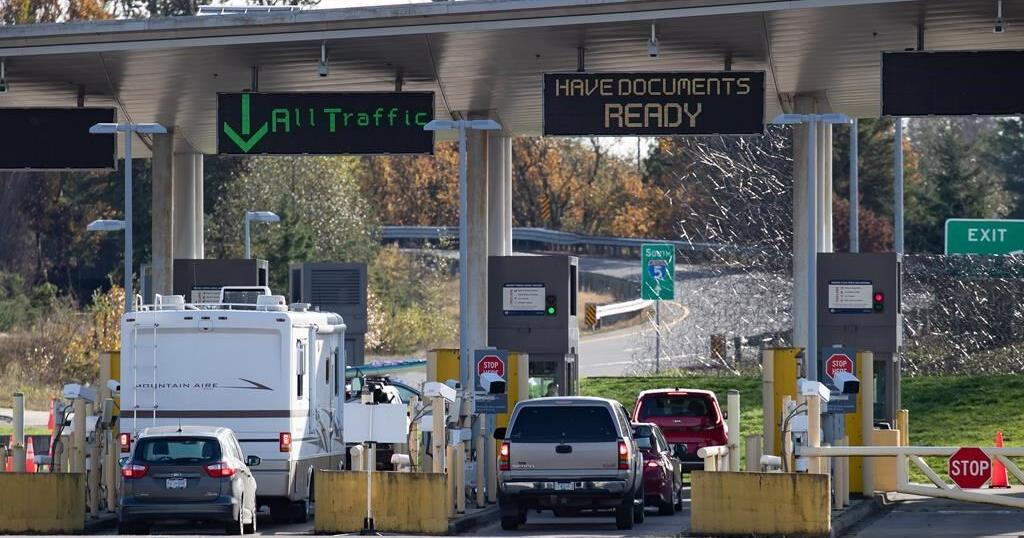WASHINGTON – While Canada cannot escape the gravitational pull of an increasingly unstable United States, a new report is charting a path forward to ensure Canadian interests become more important to our closest neighbour.
“The world does need more of Canada. The United States does. Our other allies do,” said the report by Public Policy Forum, a non-profit group that brings together experts to advise on significant policy issues.
“But it is up to us to make it happen.”
The report, which will be released publicly Wednesday, suggests Canada should deepen co-operation with America in key sectors now.
Canadian officials and business groups have been pounding the pavement across the U.S. to connect with Democrats and Republicans about bilateral interests, making sure Canada is prepared for any outcome of the November election.
Top of mind for Canadians shaking hands with their American counterparts is the looming review of the U.S.-Mexico-Canada Agreement in 2026. Both presidential candidates are selling protectionist policies that could cause uncertainty for Canadian trade.
While the U.S. is Canada’s largest trade partner, the report notes that Canada is a “dwindling economy” in comparison and states like California, Texas and New York have economies the same size or bigger.
Others have warned the relationship between the two countries shifted from being strategic to transactional as Canada became less critical compared with other places in the world.
“We can’t coast,” said Edward Greenspon, one of the report’s co-authors. “Our allies need us and we have to fight for relevance in a world that is much more pressurized.”
The Public Policy Forum and the Munk School of Global Affairs at the University of Toronto partnered last year to explore how Canada could manage the risks.
The report found the situation is not dire. If Ottawa can align its national interests with those of its close partners, especially the U.S., there are opportunities that play to Canada’s strengths.
“We need to put ourselves on the agenda early, regardless of who wins the presidency and who controls Congress,” the report noted.
It suggested instead of putting “all our eggs” in the basket of the trilateral trade agreement, Canada should focus on four high-impact sectors: Arctic security, critical minerals, energy and the environment and technologies, like artificial intelligence and quantum computing.
The report suggests those sectors should be “continentalized,” requiring production and investment across both sides of the international border. Greenspon said it will get “sticks in the ground now” in areas that really matter domestically and abroad.
Arctic security is of increasing importance for Americans pushing back on Russian and Chinese activities in the North.
The report said increasing Arctic investment would demonstrate to Washington that Canada isn’t shirking responsibilities and would bring the country closer to its NATO target of spending two per cent of gross domestic product on defence.
After days of public pressure from U.S. politicians at this year’s NATO leaders’ summit in Washington, D.C., Prime Minister Justin Trudeau said Canada expects to hit that target for the first time in 2032.
The Public Policy report also points to Canada’s vast resources of critical minerals, which are needed for the green and digital economies. The U.S. is an eager market and other allies are looking to get away from China as their source for the materials.
“Where 20th-century geopolitics featured battles over access to crude oil, the 21st century might well be defined by a struggle over critical minerals,” the report noted.
Canada could also matter more for America’s electricity grid and environmental goals, whether through small modular nuclear reactors, uranium, natural gas or with experiences around carbon capture.
The U.S. will need to expand electricity transmission by roughly 60 per cent by 2030 and may need to triple it by 2050, according to research from Princeton University.
The report said Canada and the U.S. should work together to set standards for next-generation technology and create agreements to encourage companies build supply chains and procurement together across the border.
The first thing Ottawa has to do is be clear with Canadians that the situation globally poses challenges but also brings opportunity, Greenspon said.
“There’s always bumps in the road but we need to lay down as much pavement as we can and we have a lot of material with which to do that,” he said. “We have a lot going for us.”
This report by The Canadian Press was first published Sept. 17, 2024.
